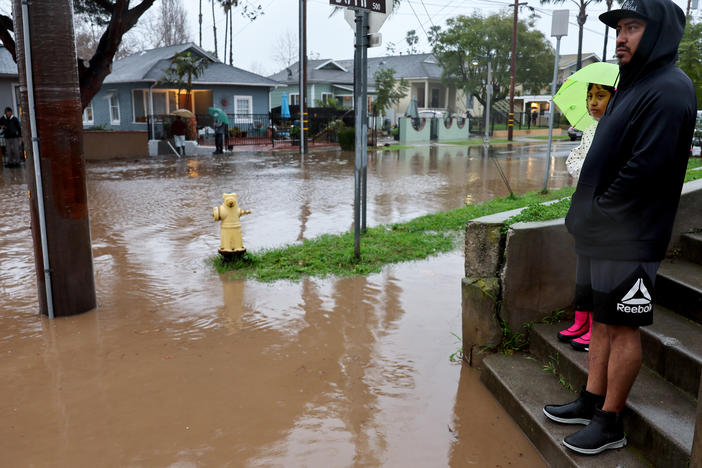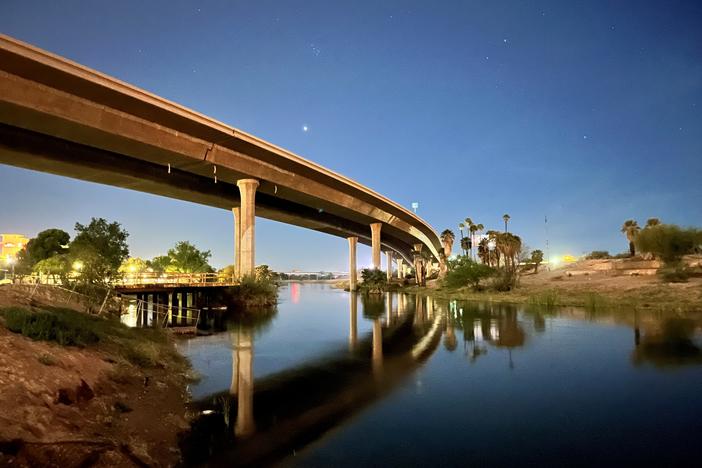Section Branding
Header Content
Summer storms created rivers and lakes in California's Death Valley
Primary Content
Death Valley's Badwater Basin is full of water after an epic year of rain and snow in California - and wildflowers are blooming extraordinarily late in the season.
Transcript
ARI SHAPIRO, HOST:
Death Valley, the driest place in North America and one of the hottest places on Earth, now has a huge, salty lake sitting in the middle of it.
LAURA CUNNINGHAM: This area is pretty stark. And so when you see a lake in it, you know, it's sort of joyful.
MARY LOUISE KELLY, HOST:
Laura Cunningham co-founded the desert conservation group Basin and Range Watch. She has lived near Death Valley for decades. And when the park reopened to visitors a few weeks back, she went to see the lake for herself.
CUNNINGHAM: So you walk out on this kind of moist, white salt crystals, and then you can get right to the edge of the water. And it's just - it's saline. It's like very salty water.
SHAPIRO: In a picture Cunningham snapped that day, the water looks like glass.
CUNNINGHAM: It was beautiful. It was like a mirror. There was no wind when I went, and it reflects Telescope Peak. So you have this 11,000-foot mountain reflected in this desert lake. So it's very special.
SHAPIRO: The lake formed after the remnants of Hurricane Hilary hit the park in August, dumping more than two inches of rain on Death Valley in a single day. It's the park's rainiest day on record. All that water damaged 1,400 miles of Death Valley's roads, closing the park for nearly two months.
KELLY: The rain also triggered flash floods in the park's mountains and canyons and sent torrents of water shooting out into the salt flats of Badwater Basin - and, voila, a giant salt lake.
SHAPIRO: Cunningham says the lake is a reminder of what this desert landscape looked like long ago.
CUNNINGHAM: We've had a lot of lakes reappear. And it reminds me of a time 10,000 years ago when we had more rain in the desert during the ice age. So it's like this storm reawakened all these ancient geological, hydrologic processes that you see remnants of. But it's amazing to actually see the basins full of water and the desert rivers flowing.
SHAPIRO: All that flowing water has been a good thing for local wildlife, too.
CUNNINGHAM: 'Cause it's brought up greenery. I've seen some bighorn sheep, and they're just happy. They're grazing on the wildflowers. The springs - and there are a lot of springs in Death Valley - are flowing really nicely. So the rains were kind of a gift.
KELLY: An official at the park told us the lake is currently two miles wide, four miles long, but only a few inches deep.
SHAPIRO: And it's slowly shrinking as the water evaporates, so it may already be gone by the end of this month.
(SOUNDBITE OF EL BUHO'S "MEDUSA (FEAT. KLIK & FRIK)") Transcript provided by NPR, Copyright NPR.
Bottom Content



